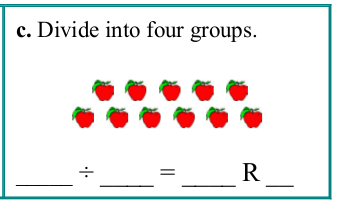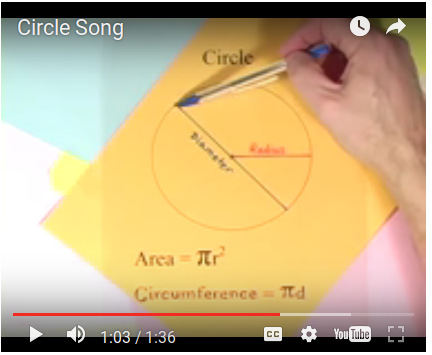 Maria's Math News, February 2017 |
|
In this newsletter I have a new feature... we are going to LOOK BACK 10 years to the math newsletter I published in February 2007. Seems like a LONG time ago, right? Time just passes SO fast! In this edition:
1. Math Mammoth newsSome of you might be waiting for this announcement...Math Mammoth Grade 7 South African version is now available! See free samples and information here. |
2. Looking back: Ten years agoIn my newsletter 10 years ago...
In case you're interested, you CAN still see the old newsletters from February and January 2007. Some links in them are dead though. |
3. Dividing into four groupsOne Math Mammoth user was stumped by this problem...There is a picture of 11 apples and it says to "Divide into four groups."  Now, 11 ÷ 4 = 2 R3, clearly. (We get two apples in each group, and three apples left over.) Here comes the part that stumped this lady: "...if I divide 11 into 4 groups, the groups have to be 2. That leaves a remainder of 3, but then the remainder is bigger than the group. It seems like it could be right anyway, but if you "check" the answer by using 11 ÷ 2, you get 5 R1." This is an interesting question! There are a few things to keep in mind:
Hope this helps! |
4. A question on rounding and estimatingI got this question from a Math Mammoth user...In 6A, Rounding and Estimating, the dollar amounts in problem 5 and 6 led me to a question. In question 5 the dollar amount is rounded to the nearest TENTH, but in question 6 it is rounded to the nearest ONE for the apples and TENTH for the cheese. This is our first book we have used and I was wondering if there was a rule we should be following for this procedure? Thank you so much! These books are awesome. The math problem in question is this: Elisa bought 7 lb of apples for $1.19 per pound and 3 blocks of cheese for $11.45 a piece. Estimate the total cost. Here's my answer: Estimation is not an exact science but depends on your mental math abilities. You round based on what YOU can calculate in your head. And if you can calculate in your head without rounding at all, you're welcome to do even that, but I know most people can't, or wouldn't want to take the time. So, whether you round to the nearest dollar or nearest ten cents is up to you. Check what kind of number you get -- is it easy to calculate with? In this case, rounding $11.45 to $11.50 is preferred, because it is still fairly easy to calculate with 1/2 dollar, and it allows less error of estimation than rounding to the nearest dollar (which would make it $11). The amount $1.19 could have been rounded to $1.20; nothing wrong with that. But then you have 7 x your amount... can you do 7 x $1.20 in your head? If yes, great! (You should be able to!) If not, round to $1.00. |
5. Find the robberIn this game, you get to practice coordinates and logical reasoning — where does the robber hide? In how many guesses will you locate him?After you guess, the game gives you the distance from your guessed point to the robber's location — but according to the city's streets, not as the crow flies. Fun and fascinating! => http://nrich.maths.org/6288 Thanks for reading! Feel free to forward this issue to a friend/colleague! Subscribe here. Till next time, Maria Miller |
| Math Mammoth freebies | Math Mammoth on Facebook | Newsletter Archives |
| Inspire4 | Complete curriculum | Placement tests |


